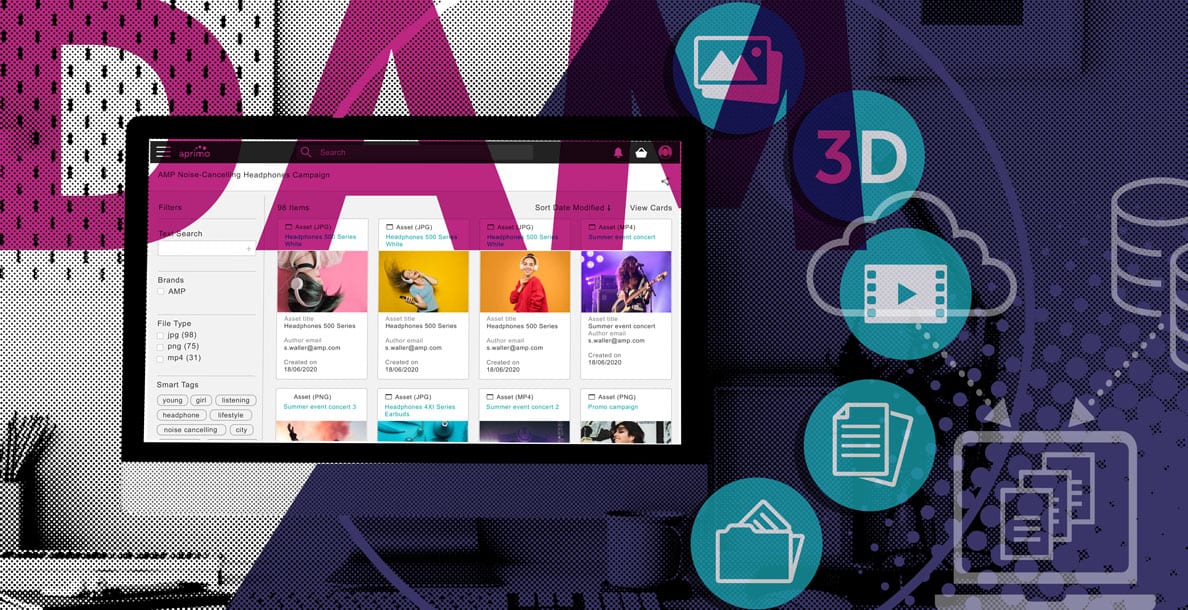Digital Asset Management (DAM) is increasingly an essential part of the technology ecosystem for many leading enterprise organizations.
But what exactly is DAM? Do you need DAM? How can a DAM tool help marketers?
What Is DAM?
On the surface, DAM technology appears to have some similar content management features – like the ability to store images and videos–as adjacent solutions like Web Content Management (WCM), Cross Channel Campaign Management, and eCommerce platforms.
DAM can indeed work with all these types of solutions, but DAM’s approach to content is different. While other solutions focus on managing content specific to a channel, DAM is optimized to manage omnichannel content creation, management, and sharing. And DAMs have greatly improved over the years, adding many more robust asset management capabilities.
So, how do you know if your organization can get by with these other solutions or if you have DAM needs now? What is the future of DAM and will your organizations be impacted?
Five Questions to Determine Your Organization’s DAM Needs
DAM has traditionally been defined as a solution that enable the organization, storage, and retrieval of rich media assets like:
- Photos
- Videos
- Audio files
- Creative files
- Emerging forms of multimedia content
So should you manage this content in a DAM instead of keeping it in other solutions? Ask yourself these five questions to determine if a DAM is right for you:
Question 1: Is your content siloed in multiple solutions?
While other solutions could manage this content, DAM solutions provide a single repository to access and manage all different types of files. Instead of having different content versions for your website, email marketing, and PIM, you can now have a single source of truth for all assets in a DAM. You also can use it to create a library of all your content, so you can more easily structure and organize it, via metadata and taxonomy, to make it easier to find, connect it to other related pieces of content, and better prepare it for distribution.
Question 2: Do you want to do more than park assets?
DAM solutions today support the entire content lifecycle, from ideation and planning, creation and management, to analysis and archival. Importantly, DAM supports these work-in-progress assets, so that creatives have a place to create and review assets while still using their creative tools of choice. DAM solutions also enable marketers and eCommerce teams to work with assets throughout the content lifecycle, and review/approve, enrich, analyze and archive them.
Question 3: Do you need to support multiple asset types?
DAM is optimized for rich media content, like images, videos, and creative files. For organizations that are engaging in richer storytelling, DAM is critical for supporting these types of assets. Plus, DAM now isn’t just a media library–it also supports additional types of content, such as text or 3D images, and can understand which content is being used most often and by which user or groups of users, so it can be utilized as a smarter single source of truth for both content assets and the performance of those assets.
Question 4: Do you have sophisticated content enrichment needs?
Most DAMs have more robust content enrichment capabilities than most other content delivery-focused solutions can offer. So if you need to manage lots of different content versions, digital rights by dates, regions, or channels, global/local content variations, or download different content resolutions on-demand, DAM is a better fit for your needs.
Question 5: Are you managing these assets across groups?
Enterprise DAM solutions are built to scale: they aren’t just managing a couple thousand web-ready images. Instead, enterprise DAMs manage hundreds of thousands of assets across regions. Additionally, it’s not just for a select few in a web group or a social media group. DAM solutions manage assets so that groups across the organization—from marketing to creative to commerce to sales—can easily search and find the right asset.
What is the Future of DAM?
DAMs are continuing to evolve and are becoming a solution that also can be used to improve content ideation and planning processes, as well as determine a more accurate ROI for all content. With the addition of Artificial Intelligence (AI), they can enable improved resource management, workflows, and more accurate content performance metrics. They also continue to offer more robust functionality to enrich assets, including video clipping, speech-to-text, and optical character recognition. These types of innovations continue to spur the DAM industry forward, so if these are features on your ‘must-have’ list, then DAM solutions are the right place to start looking.


